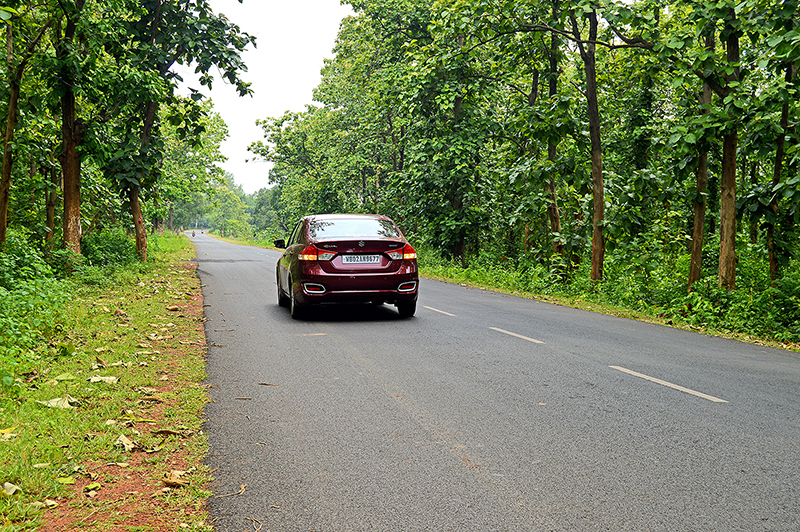
Team WHEELS tearing through the forest to Haripur
With temperatures in Kolkata soaring and discomfort level in the atmosphere lingering, we felt the compelling need for a weekend getaway. And having exhausted the bucket list of Bengal’s most easily accessible weekend destinations, Team WHEELS embarked on a journey to an offbeat location in a neighbouring state, hardly 215 km away from Kolkata. Nestled amidst a lush green backdrop of rich and diverse countryside, the magnificent Belgadia Palace in Mayurbhanj district of Odisha was the perfect choice to enjoy a royal homestay over a sultry summer weekend.
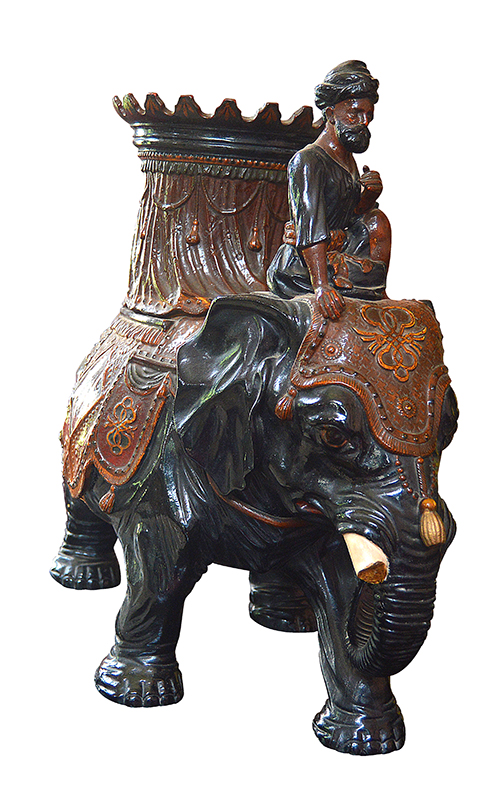
ROUTE
Located at Baripada town, Belgadia Palace is conveniently connected through Gopiballavpur in Mayurbhanj district of Odisha.
To reach the Belgadia Palace, start from Vidyasagar Setu (setting your trip meter to zero) to enter Kona Expressway. At the end of the Kona Expressway take the slip road on the extreme left to follow the left bend and meet NH-16 (NH-6). Continue straight on NH-16 (NH-6) towards Kolaghat followed by Kharagpur (remember, at trip 111 km, just before Kharagpur, to opt for the flyover on the left, linking Kharagpur town), and reach Chowranghee Morh.
From the huge traffic roundabout called Chowranghee Morh in Kharagpur, get into the second exit on the left to continue straight on NH-16 (NH-6), driving towards Lodhasuli Forest. The old highway has been widened from here but a small stretch of about
3 km is still under renovation. Continue forward on NH-16 (NH-6) to drive through Lodhasuli Forest to find a bridge on River Dulung.
Immediately after the bridge you have to turn left into SH-9 from ‘Pheko Morh’ towards Gopiballavpur. The ongoing work on the highway may impel you to take a U-turn on right to enter the service lane adjacent to the newly constructed flyover and enter SH-9 from Pheko. Continue straight thereafter towards Gopiballavpur passing over a bridge on River Subarnarekha. Within 2 km of the bridge turn right into Hati-Gopi Road from an intersection called Hatibari Morh at Gopiballavpur Bazaar and continue straight to reach the Belgadia Palace in Baripada town.
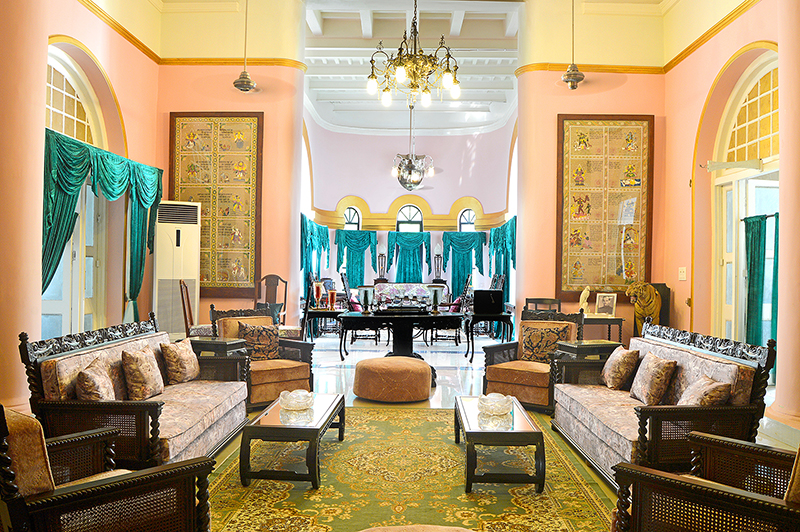
The grand living room
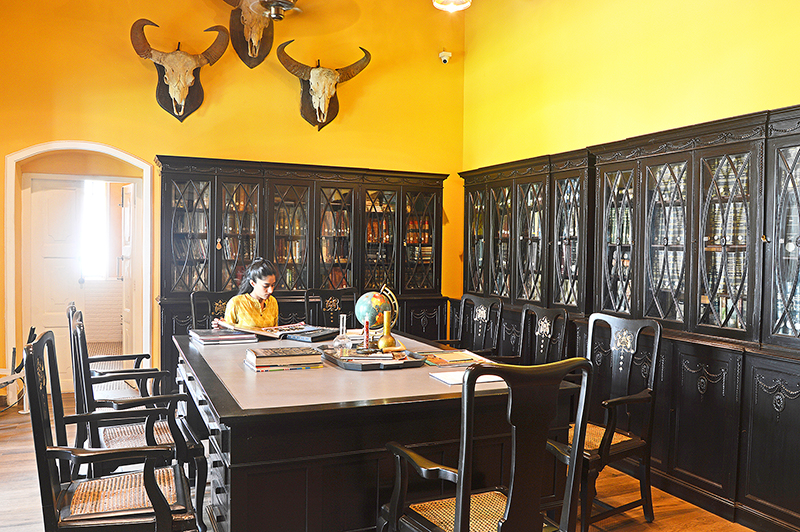
The library
THE PALACE
Established in 1804 and spread over 15 acres of land, the Belgadia Palace sits on a hillock overlooking verdant green lawns surrounded by orchards. It serves as a major attraction for tourists. As we glided down the long drive-in from the palace gate to reach the Elephant Porch, our eyes shone in excitement on seeing the elegant double storeyed mansion with its sparkling white exterior flanked by turrets on either side. We were told the “Hathi Barandah” or the huge porch was built to allow the king to mount the elephant howdah during ceremonial processions.
THE INSIDE STORY
On our arrival, we were received by an escort, who ushered us inside the palace. We crossed the huge verandah and a small reception to enter the living room, where we were welcomed by the two princesses, Mrinalika and Akshita.
THE LIVING ROOM
The living room is spellbinding in its beauty and elegance. We marvelled at the stylish furniture collected over centuries, the huge portraits of the kings and queens, beautifully handcrafted art pieces at the various corners, elegant chandeliers, the vintage telephone and the vinyl player.
The semi circular room looked spectacular with its two sets of themed seating arrangements and emerald-curtained French windows. As we relaxed over a welcome drink, we were joined by the family who narrated the history of the palace and interesting anecdotes about the Bhanjdeos.
HISTORY
Mayurbhanj was one of the princely states of India during the British Raj. The Bhanjas, having ruled for nearly 1500 years, are the longest reigning clan of this region.
The construction of Belgadia Palace began on the orders of Maharani Sumitra Devi Bhanjdeo (1796 to 1810) in 1804. In due course, the palace was added to and used as a royal guest house for state visitors by her descendants.
The present day occupants of the palace include the Queen Mother Bharati Rajyalaxmi who is the daughter of King Tribhuwan Bir Bikram Shah of Nepal, her son Praveen Chandra Bhanjdeo, the 47th ruler of the Bhanja dynasty, and his wife Rashmi Rajyalaxmi of Mayurbhanj who belongs to the royal family of Jaisalmer. The oldest princess Rajyashree is married into the royal family of Jhabua, while the princesses Mrinalika and Akshita are social entrepreneurs and Directors of The Belgadia Palace and its philanthropic arm The Mayurbhanj Foundation.
After an interesting conversation, we were invited to join the other guests and the family members for lunch. As we crossed a quaint parlour our hearts skipped a beat at hearing a rapid thumping sound – only to discover Sebastian (a 5-month old Great Dane) climbing down the enormous, wooden carpeted staircase. The playful Sebastian immediately befriended us.
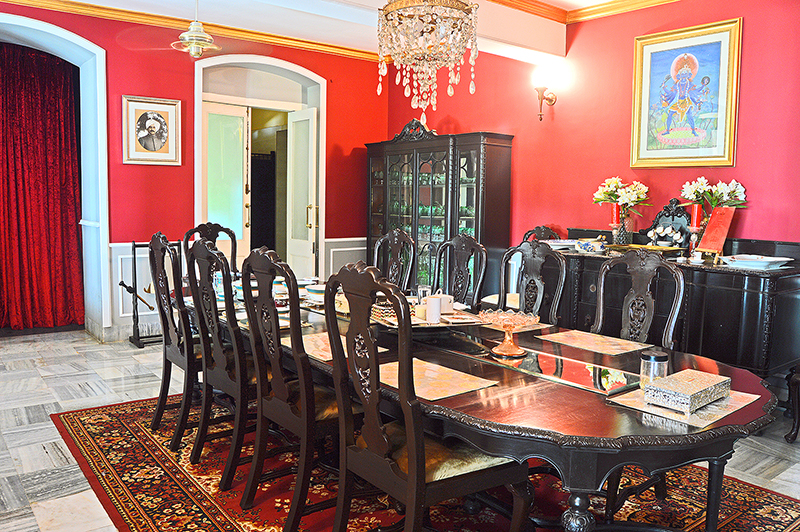
The elegant dining room
THE DINING ROOM
Similarly awe-inspiring is the grandeur and sophistication of the dining room. A gorgeous chandelier lights up a huge 12-seater dining table set with delicately inlaid crockery and embossed cutlery, antique pieces on the walls and at various corners and a beautiful wash area.
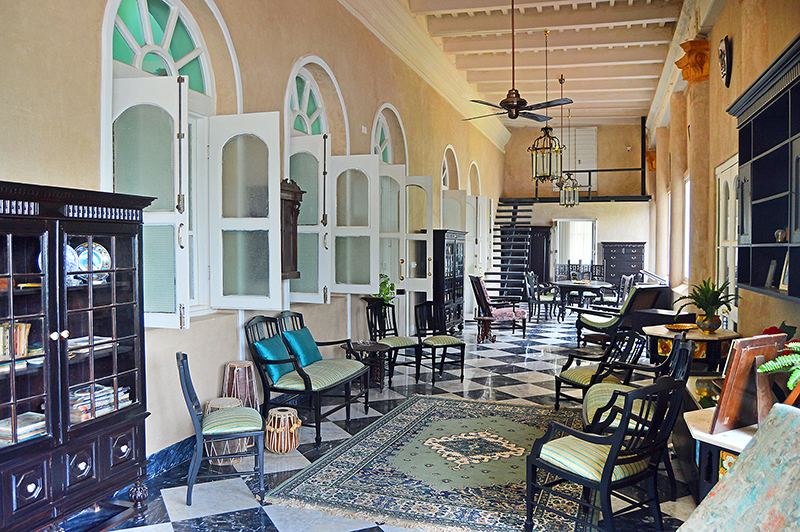
The vast corridor
THE FOOD
The concept of a boutique homestay is incomplete without the discussion of food. Lunch was rather a simple fare with salad, traditional curd-rice, begun pora, spinach fritters, shredded chicken, mango chutney and kheer. Even if a little too offbeat for our Bengali palate, we appreciated the idea of sharing a typical Oriya meal with the family and other guests, friends of the Bhanjdeos, who run their own NGO in Mumbai.
Dinner, more to our liking, was a pan-Indian spread comprising rice, roti, dal fry, a couple of traditional Oriya vegetarian dishes, koftas and chicken, all cooked to perfection. To satiate our sweet tooth, there were ripe mangoes from the orchard and sweets.
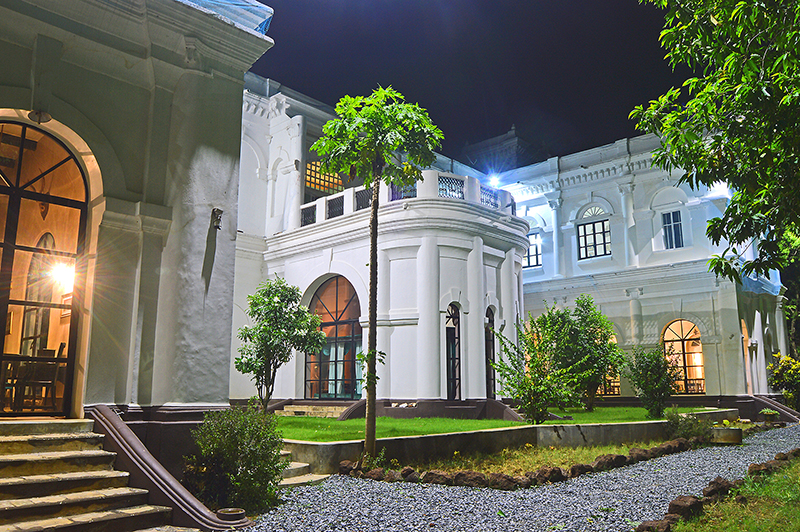
Enchanting rear view of the palace at night
THE GUIDED TOUR
The princesses, Mrinalika-Akshita and Sebastian gave us a guided tour of the palace. The sisters seem to have brought their own aesthetics to the unique interiors. There are ten guest rooms at present, each reflecting the personalities of royal guests and close friends.
“Architect and interior designer Pooja Bihani of Spaces and Design, a friend of ours, worked closely with us to restore the property,” says Mrinalika. “We have retained all the original furniture of the Bhanjdeos. However, we have repurposed them taking care not to hurt the royal insignia.”
The rooms have carefully curated bookshelves with a few memorabilia of the bygone era that include ink pots, fountain pens and old school lanterns. The lush velvet curtains, rugs and carpets from Kashmir add a dash to the grandiosity.
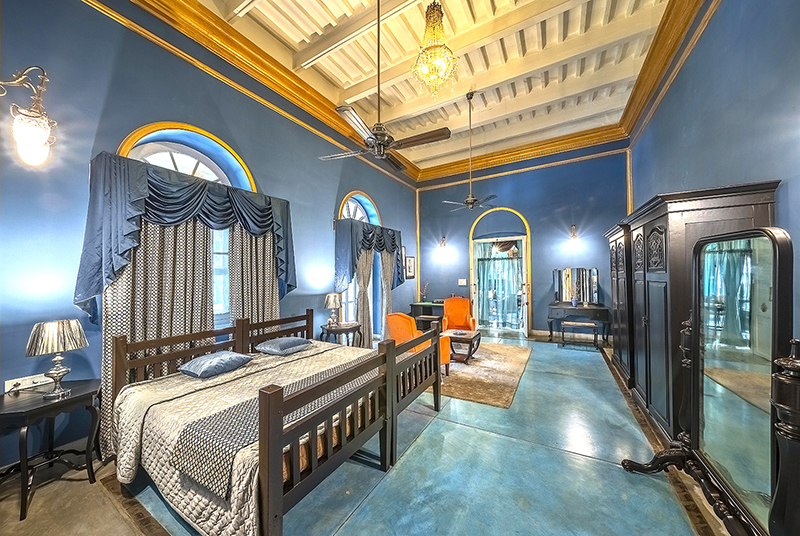
The Meiji Suite
THE ROYAL SUITES
There are six suites, each of which has been given a name based on the theme and colour of its interior. The picturesque Bengal Renaissance Suite, has startling yet understated blood red hues with art inspired from the Renaissance. There are curtains with bespoke prints, beautiful Kashmiri rugs on the floor. The bathroom sports teakwood and wicker furniture with a claw foot club from England.
The Meiji Suite, with its cool purple walls, champagne curtains, a vanity room and black and white chequered marble bathroom is very inviting as is the Ubud Suite, which commands attention with its blush pink walls and fuchsia pink furnishing. The decors of the Himalayan, Shah and Victorian Suites are also unique and classy in their own ways.
“Belgadia Palace is not a hotel but our home that we have opened for visitors who will be able to experience the past, our roots and discover Odisha and all its wonderful aspects - art, culture, heritage, and people,” says Akshita.
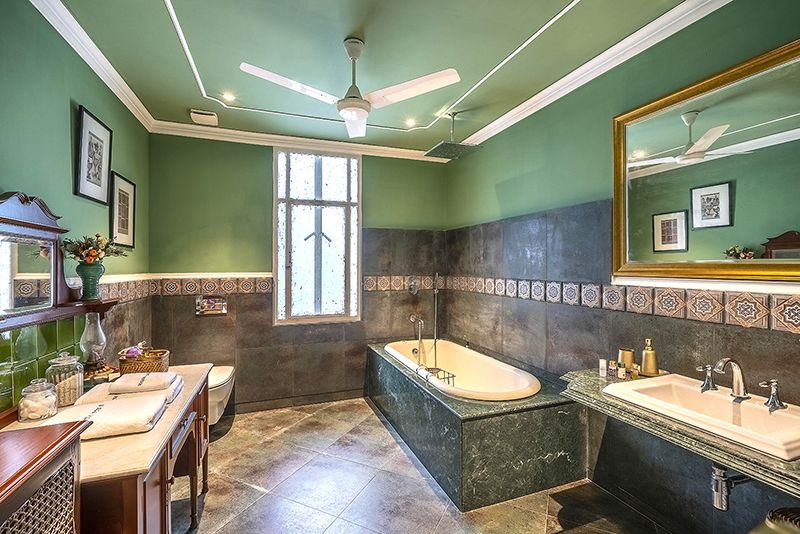
An exotic bathroom
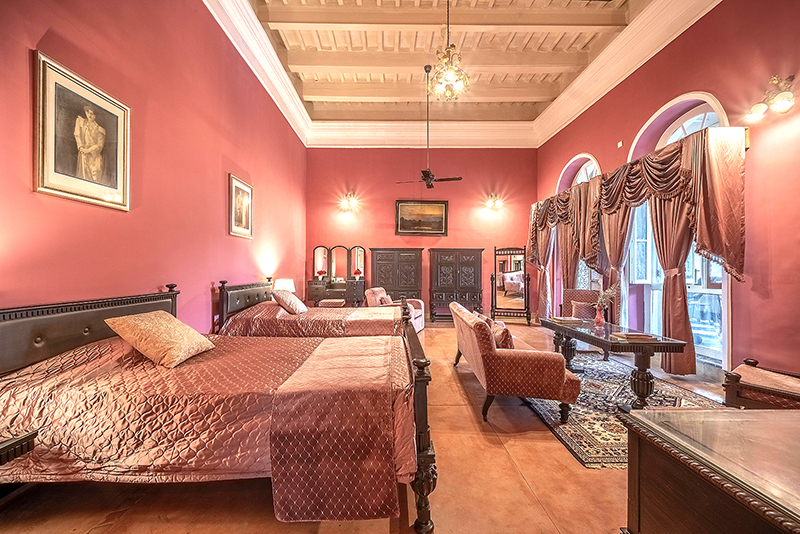
The Bengal Renaissance Suite
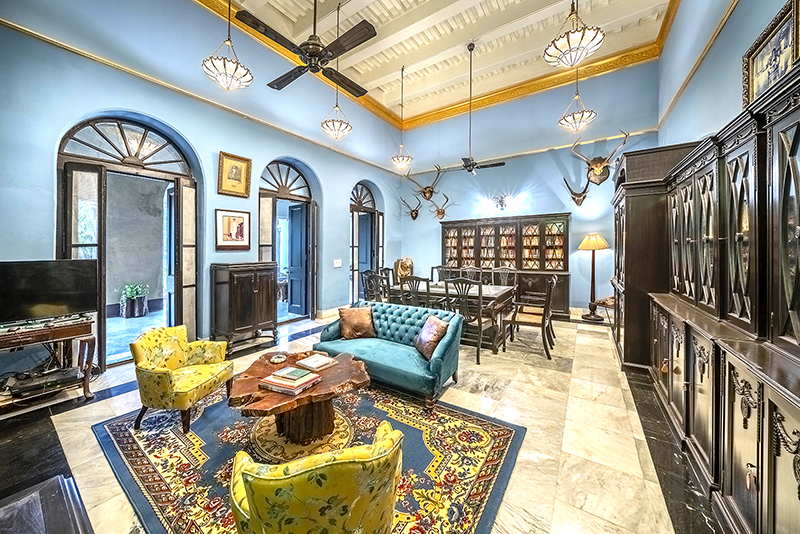
The personal library of the Bhanjdeos
THE STANDARD ROOMS
Also impressive are the standard guestrooms. Though much smaller in size, each of these is stoked with a vintage letter writing desk and chair, full length mirror and dressing table, a seating arrangement and a centre-table. The art deco bedside tables and lamps alongside the large bed, linen and furnishings, all emanate a regal touch.
ACTIVITIES IN THE PALACE
Belgadia Palace is not just about passive entertainment. We spent some time glancing through the rich collection of books in the libraries, accumulated over the past 300 years. Out of the two, one is for public viewing, while the other is for private use. There are books all-round the palace for you to pick up and settle down with for that quiet and enriching experience.
And, if you are looking for some lively entertainment, there is the TV room with a plush décor and a huge screen, wherein we spent some fun moments watching the World Cup Cricket. There’s also the holy Maa Mangala temple adjoining the palace wherein the royal priest conducts the daily aarati. The chanting of the priest, the fragrance of the flowers and incense sticks, the sound of the conch is a mystic and very Indian experience.
PLACES TO VISIT
To make your stay at the Belgadia Palace worthwhile, there are a few interesting places in and around Baripada.
BARIPADA TOWN: Driving around Baripada town brought to light many administrative buildings originally built by the Bhanjdeos, which go a long way to prove that the Mayurbhanj rulers were indeed visionaries. They introduced fire stations, courthouses, police stations, jails. We also saw the original Mayurbhanj Palace where the Bhanjdeos actually resided, quite intimidating in terms of its magnitude and is presently a women’s college.
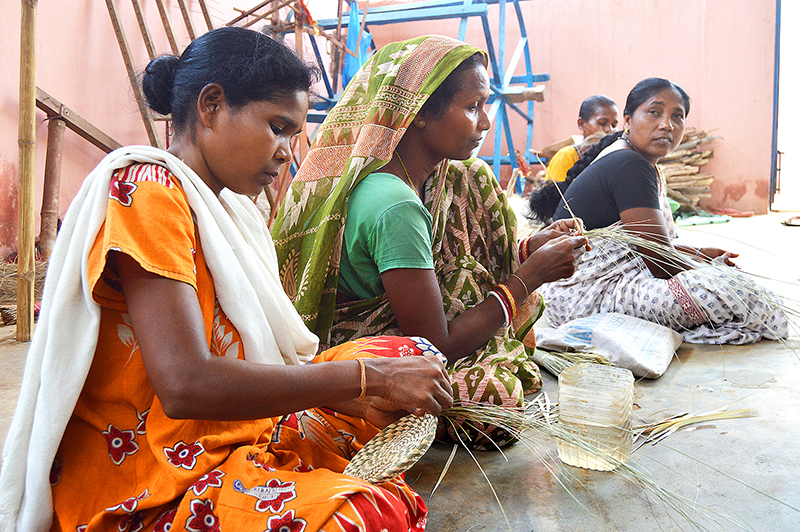
Tribal women of Guhaldhia village weaving products out of sabai grass
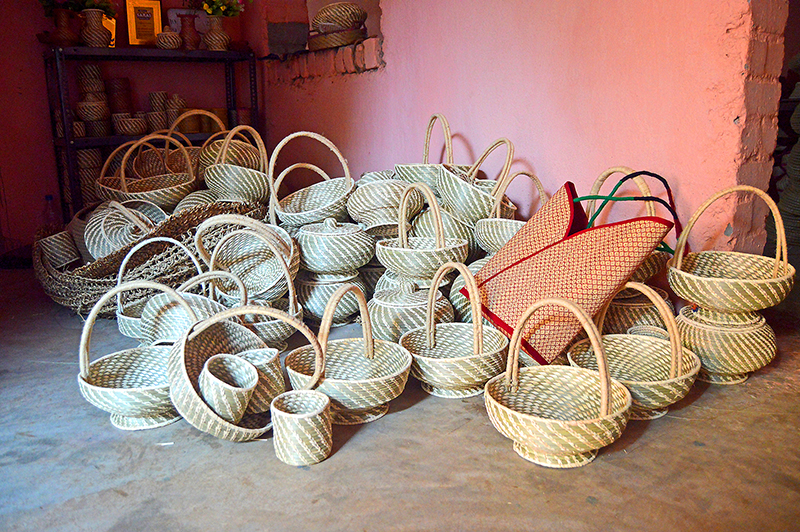
Baskets made of sabai grass on sale
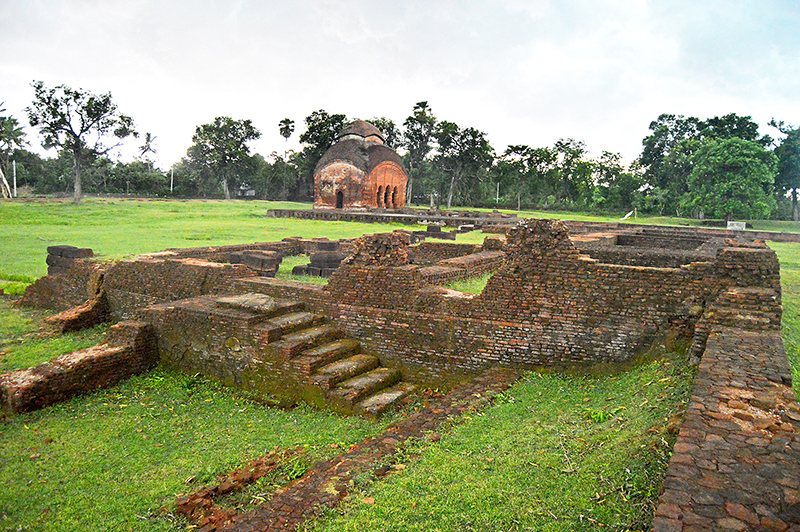
Ruins of Haripur Palace and Rasikraya temple
HARIPUR: Our next destination was Haripur, about 30 km away from Baripada. Driving up to Haripur was an exhilarating experience. The road with its smooth tarmac and tall trees on either side made an avenue. Adding to the appeal were a few water spots which appeared occasionally in the midst of the vast expanses of fields.
RUINS OF HARIPUR PALACE: Sprawling over 25 acres of undulating grassfield, the famous Haripur Palace consists of the remains of a 400-year old fort and temples. The ruins are situated on the banks of the River Budhabalanga and is surrounded by forest and a few tribal villages. Though in ruins, the site continues to attract tourists from across the country both for its historic importance and scenic beauty.
It is believed that the then king of Mayurbhanj, Maharaja Harihar Bhanja, had built this palace at Haripur because of its impregnable geographical surroundings, following an attack on Khiching by Firuz Shah of the Tughlaq dynasty in 1361. The structures that exist on the palace premises today include the Jagannath and Rasikaray temples, parts of the fort and the main gate. The site is now maintained by the Archaeological Survey of India (ASI).
RASIKRAYA TEMPLE REMAINS: The Rasikraya temple resembles the sloped-roof terracotta temples of Bengal. Only a few of these terracotta tiles now remain.
Visiting Haripur turned into an adventure when a massive thunderstorm followed by heavy showers engulfed us. We drove back in the lashing rains for nearly half an hour to reach Baripada town.
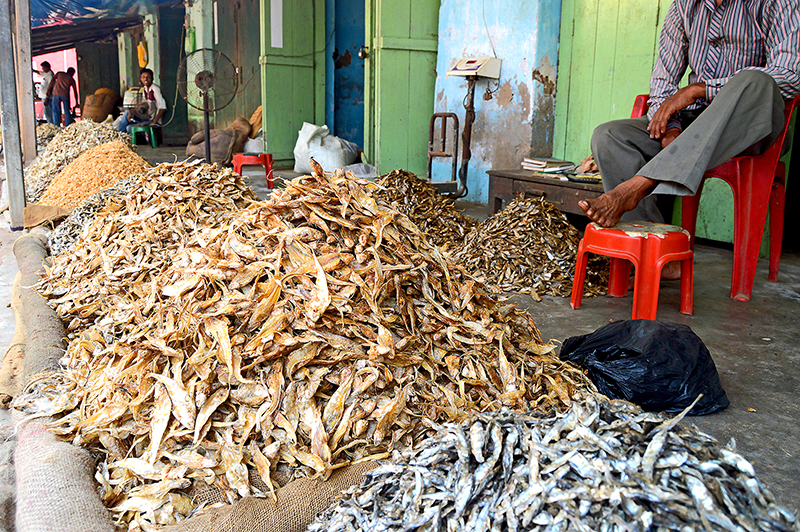
Dried fish sold in a local haat – Baripada
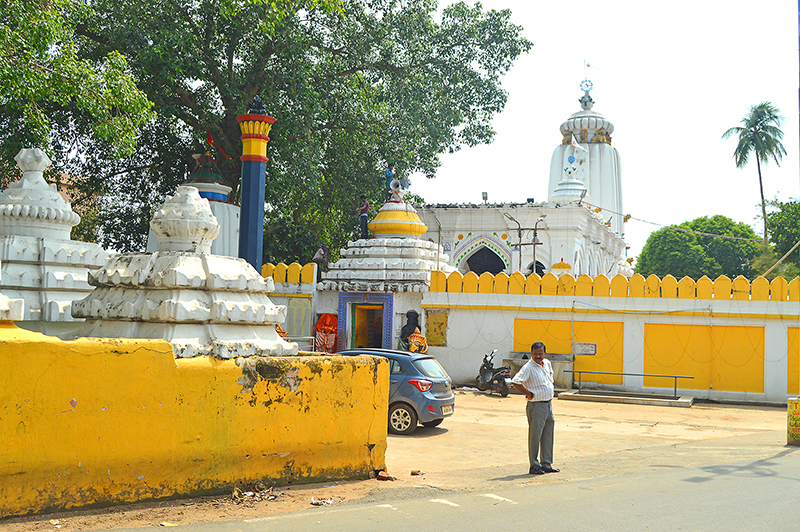
Jagannath temple – Baripada
JAGANNATH TEMPLE: Our trip of the day ended with a visit to the Jagannath temple, also known as the Haribaldevjew temple located in the heart of Baripada town. Built under the patronage of Raja Baidyanath Bhanj, the 16th century temple draws inspiration from the Kakharua Baidyanath temple. This temple is known as the second Srikhetra of Odisha.
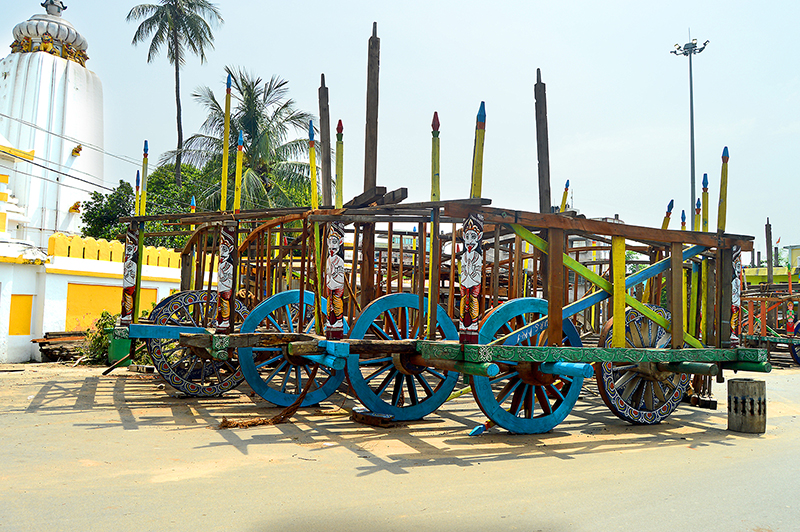
The huge chariots of Jagannath temple
The Jagannath temple of Baripada is one of the oldest temples of Odisha. Its Rathayatra is the oldest one after Puri and second biggest after Puri Rathayatra, being celebrated for the last 500+ years. The rituals of Baripada Rathayatra are special. Female devotees pull Maa Subhadra's ratha, a unique feature that attracts female devotees from neighbouring states as well.
GUHALDHIA VILLAGE: Early next morning, after a lavish breakfast, we left for Guhaldhia village where products of sabai grass is the main source of livelihood for the women.
Sabai grass is grown widely in Mayurbhanj. We met the women of a self-help group at the village who weave this grass into beautiful baskets, lamp-shades, table mats and other articles of varied shapes and sizes for sustenance. According to Akshita, "Presently, we are taking the tourists to the village to understand how to make sabai handicrafts thus producing alternative market linkages than what they already have."
We picked up a few intricately crafted sabai-grass products, interesting gift items at throw-away prices of `50 and `200.
Before returning to the palace, we stopped by at a local Sunday haat in the heart of Baripada town abounding in local produce. Apart from the usual cereals, vegetables, spices and clothes, there were massive stocks of earthen and copper utensils, tribal jewellery and varieties of dried fish. If you are lucky, you may even come across tribals selling their specialty items such as cockroach fries, red ant chutneys and mahua (a local alcoholic drink).
After a sumptuous lunch, we were all set to get back to Kolkata.
What is it about Belgadia that draws you to visit again? Is it the rare whiff you get of royal luxury – combined with the charm of crumbling ruins? Is it the warmth of the erstwhile ‘ruling’ family – or the smiles on the faces of the local artisans? Whatever the source, we are reminded of something the singer Kris Kristofferson wrote: ‘I'd trade all my tomorrows for one single yesterday’. Yes, that might explain the hint of wistful nostalgia we feel, a reluctance to let go of our privileged glimpse into the past...
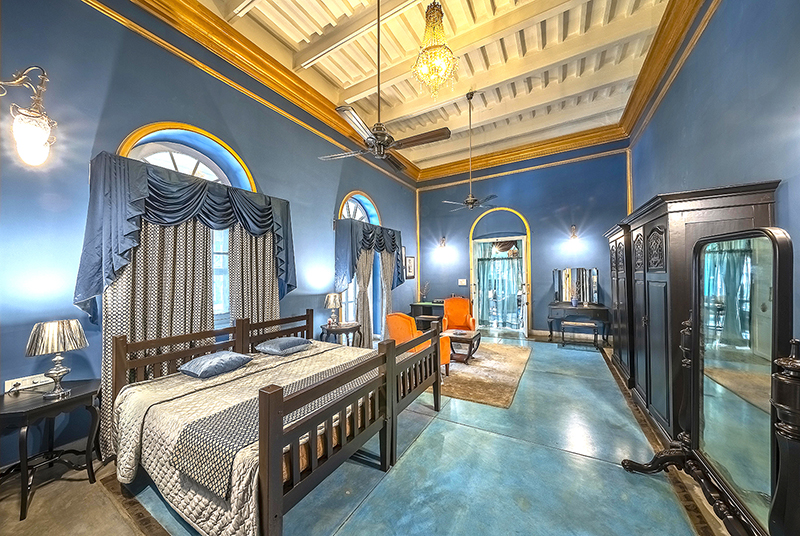
Standard : A